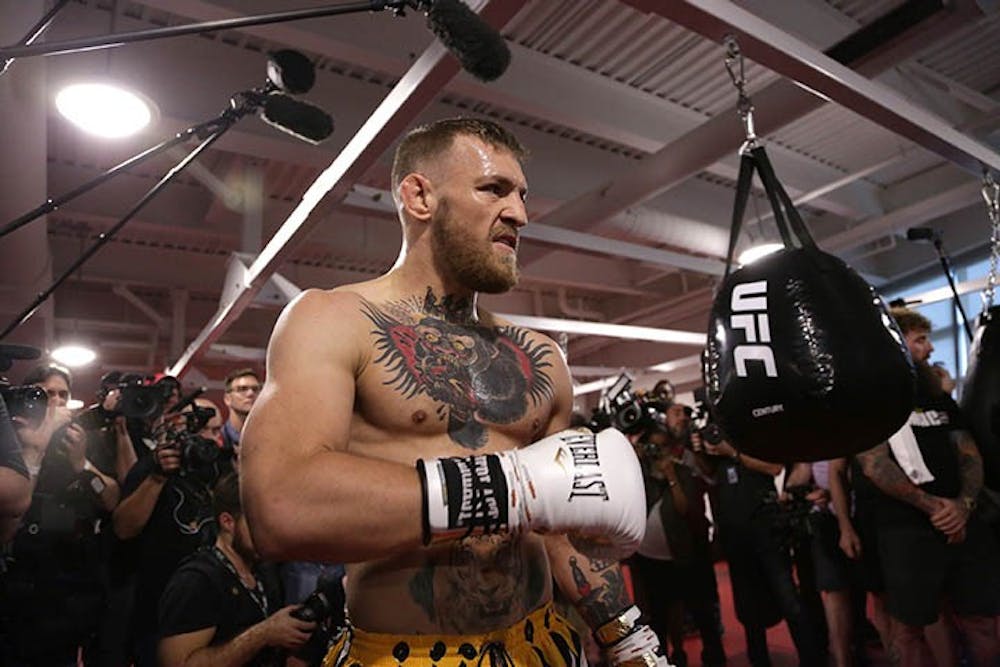Martial arts is a term synonymous with combat and spirituality that every person has heard about through one media source or another. Often the arts are portrayed in movies, anime and art as a path to enlightenment and supernatural abilities. However, while the former is true to a degree unfortunately there is no way for a person to fly or shoot Kamehameha waves from their hands.

Knowledge and discipline are the spiritual goals of martial arts, especially in Kung Fu, Karate and other Eastern styles. The same can be said of those from the West that focus on chivalry and honor. And the martial artists from these areas trained for the battlefield or duels.
In modern times, martial arts have become more combat sport than battlefield focused. This can be seen in Boxing and the UFC and where recently Floyd Mayweather won his 50th straight victory against Conor McGregor in a boxing match. The referee called the match in the 10th round when McGregor showed signs of fatigue and took several good shots to the head and body to ensure his own health and safety.
The fight was portrayed as a clash of titans from different worlds and they payout ran into the hundreds of millions.
In film and television, martial arts take on another form as heroes and villains fight using flight, Ki-blasts and god-like speed. In the case of Bruce Lee, he was phenomenal at Kung Fu and used his fighting abilities to take on multiple opponents at one and some wielding everything from swords, pipes and nunchaku. However, these battles include graceful and flashy moves because of choreography and movie magic.
Reality is far quicker and often brutal.
Jeff Glant, 36, is a 4th Dan Blackbelt and Head Instructor at Muncie Mudokwan with over twenty years of training experience and some of that time spent fighting in the cage in smaller MMA circuits.
“Fictionally, there’s nothing wrong with it. It’s just storytelling,” he said as he began to unbind his knee brace from his leg in the changing room at Mudokwan. “Obviously, what works on movies doesn’t work in real life.”
“You see a lot of things that are pretty and high-flying, but it’s not real,” Glant said.
Glant’s experience in the dojang and elsewhere taught him what works for real life and what doesn’t. Those skills that he built over years came in handy when he had to defend himself for real.
Glant was on break from working the kitchen at J.D.’s Bar in Decatur, Ind. He sat at the bar while his friend, Michelle, worked the bar. The bar was empty besides them and two couples that went out for a few drinks. Then three men walked in and were visibly buzzed and ordered drinks from Michelle. She gave them their orders and they drank the alcohol away and became more inebriated.
“Fictionally, there’s nothing wrong with it. It’s just storytelling,” he said as he began to unbind his knee brace from his leg in the changing room at Mudokwan. “Obviously, what works on movies doesn’t work in real life.”
They started harassing the couples at the pool table and tried to flirt with the women and became belligerent. Their boyfriends asked Glant, who was exhausted from working in a hot kitchen for most of the night to step in, but he told them, “You guys tell ‘em to stop, it’s not my problem.”
The boyfriends confronted the drunks and they apologized, but they got loud and belligerent again. “All right guys. We warned you and you’re doing it again. So, please leave,” Michelle said.
One of the men yelled, “I ain’t going anywhere!”, then slapped Michelle and knocked her down.
Glant jumped out of his seat, ran up to Michelle’s attacker and pushed him into tables and chairs.
“Out of the corner of my eye, I saw something moving and something told me to kick,” Glant said. He shifted slightly and picked up his leg, then launched his heel into another man’s chest. He toppled backward and fell over the pool table.
Glant then turned his attention to the final man who immediately put up his hands in surrender. However, the first man recovered from being thrown into the tables and tackled Glant to the ground.
“We kinda rolled around and got into a wrestling match on the steps leading up to the bar,” Glant said. They fell down the stairs bound up in combat. “Somehow, I turned in the air and pin him to the stairs. Then I just pushed his jaw into one of the stairs,” he said.
The police arrived moments later and broke up the fight.
Western martial arts like Rapier Fencing are portrayed in films like The Princess Bride and the Three Musketeers as fast paced footwork and flourish-filled bouts where heroes and villains seem to dance back and forth and around each other. While the moves and footwork are real, an actual duel would usually be over quickly as stabbing an opponent’s lung, heart or face with a powerful thrust would be certain death and wounds could also render an opponent incapable of continuing a fight.
Kaitlyn Sims, a senior at Ball State and President of Ball State’s Fencing Club, has years of experience fencing with the Epee, which is a foil with a heavier blade and larger hand-guard.
“The biggest discrepancies that I always see is all the witty banter and all of the swooshing noises that happen. Anytime you hear a sword making a swishing noise in a movie, I can almost guarantee you it’s somebody recording a Foil swiping through the air,” Sims said pretending to slash the air with an invisible sword.
I love to see it because it’s flashy and cool and it’s why I’m interested in the sport to begin with,” she continued, “but it is fairly inaccurate.”
The reality of Fencing, like any other martial art is that everything is learned gradually with great effort. Stances, footwork, strikes and parries are all broken into separate movements then blended together over time until they become instinctual.
“When I first came to club, I wanted, I KNEW I was going to do Sabre because I wanted to either be a Jedi or be a pirate!” Sims said, laughing. “And it’s not at all like that.”
Despite this, Sims continued to practice with her Epee so she could get as close to true Rapier Fencing and her desire to be a pirate as possible.
In Birth of the Dragon, the fight between Bruce Lee and Wong Jack Man was shown to be a huge affair born out of old tradition versus street fighting and Lee’s instruction of Caucasians in the art of Kung Fu.
The fight in the movie is blown up into an epic battle between these opposing ideologies, yet the actual fight, as told by Lee’s friends and wife who witnessed it, Bruce chased Wong Jack for a few seconds, tackled him and finished him with a UFC style ground-and-pound. His opponent surrendered and Lee walked away free to teach and spread Kung Fu to whomever he wished. Following this, he starred in the Green Hornet T.V. show and several classic movies such as Enter the Dragon.
Martial arts and their portrayal in media isn’t a bad thing, however it creates misconceptions of what they teach and what training and fighting are really like. Whether it’s movies, TV or anime, they all spread awareness in the martial arts and lead to people to explore that inspiration. However, the reality is that martial arts are among the most difficult things to do because of the physical and mental demands that cause many to drop out before they realize their potential.
As Bruce Lee said, “There are no limits. There are only plateaus and you must not stay there, you must go beyond them.”
For more entertainment related content, visit us at Byte Bsu!



















